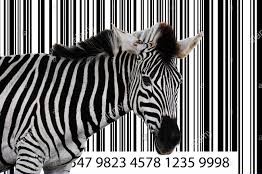Revolutionizing Textile Recycling with Fiber “Barcodes”: A Step Towards Environmental Sustainability
In a groundbreaking leap towards addressing the burgeoning issue of textile waste, researchers have drawn inspiration from the iridescent beauty of butterfly wings to develop a novel solution that could revolutionize textile recycling. This innovative approach involves using reflective fibers woven into clothing, acting as a durable alternative to traditional clothing labels and potentially transforming the sorting and recycling of textiles.
The Environmental Protection Agency estimates that a staggering 15 million tons of textile waste are either landfilled or incinerated annually in the United States alone, highlighting a critical need for sustainable waste management solutions. With the introduction of laws such as Massachusetts' ban on textile disposal in the trash, the push towards increasing textile recycling rates has never been more pressing. However, the challenges of textile recycling, particularly the sorting of fabric types, have been a significant bottleneck in the process.
Enter the research teams from MIT Lincoln Laboratory and the University of Michigan, who propose a solution that could vastly improve the efficiency and accuracy of textile sorting. Their development of fibers with engineered reflectivity, visible only under specific wavelengths of infrared light, acts as an optical barcode for identifying fabric types. This technology not only promises to streamline the sorting process by providing a precise means of identifying materials but also offers a potential pathway to enhance recycling rates significantly.
The inception of this technology traces back to the concept of structural-color fiber, a type of photonic fiber initially developed over two decades ago. By incorporating over 50 alternating layers of acrylic and polycarbonate into a polymer block, the researchers have created fibers that reflect specific wavelengths of light, thus generating a unique optical signature for each type of fabric. These fibers, designed to be woven into fabrics at the manufacturing stage, are invisible to the naked eye but can be detected using infrared sensors similar to those used in plastic recycling.
Looking ahead, the research team has applied for patent protection and is exploring avenues for commercialization, focusing on refining the fibers to match the thickness of conventional clothing fibers. Additionally, they consider using these fibers as sewing thread, allowing their integration into garments without affecting the fabric's appearance or texture.
The implications of this technology extend beyond the realm of textile recycling. As the electronic-textile market expands, incorporating such fibers could facilitate the recovery of valuable materials, such as chips and metals, further contributing to sustainability efforts in the textile industry. Moreover, the potential for creating inherently colored fabrics that do not fade offers a promising alternative to the environmentally harmful dyes currently in use.
While this technology represents a significant step forward in pursuing sustainability within the textile industry, its full potential is yet to be realized. As we await its commercial introduction, it is essential to select reputable barcode providers, such as Buyabarcode (www.buyabarcode.com), which remains crucial for businesses looking to ensure the authenticity and compliance of their products in the marketplace.







